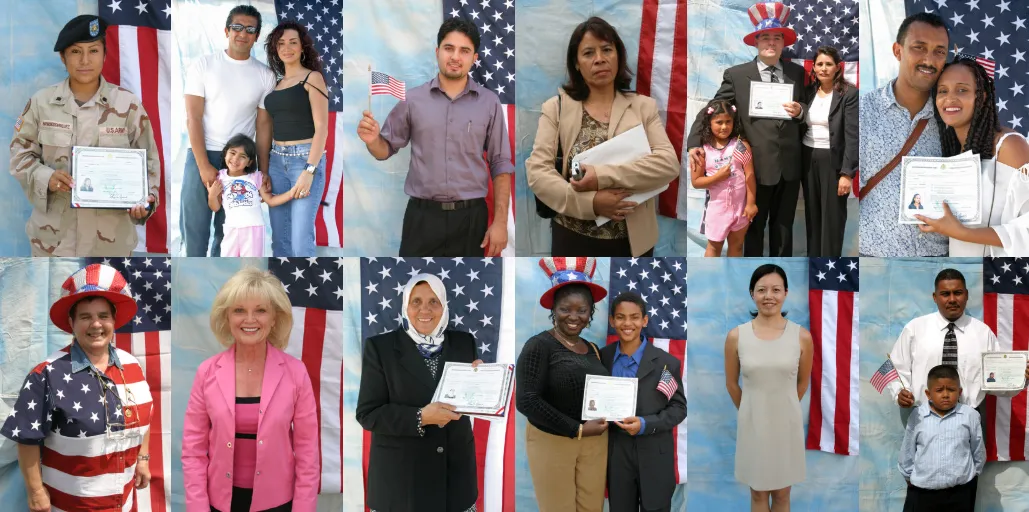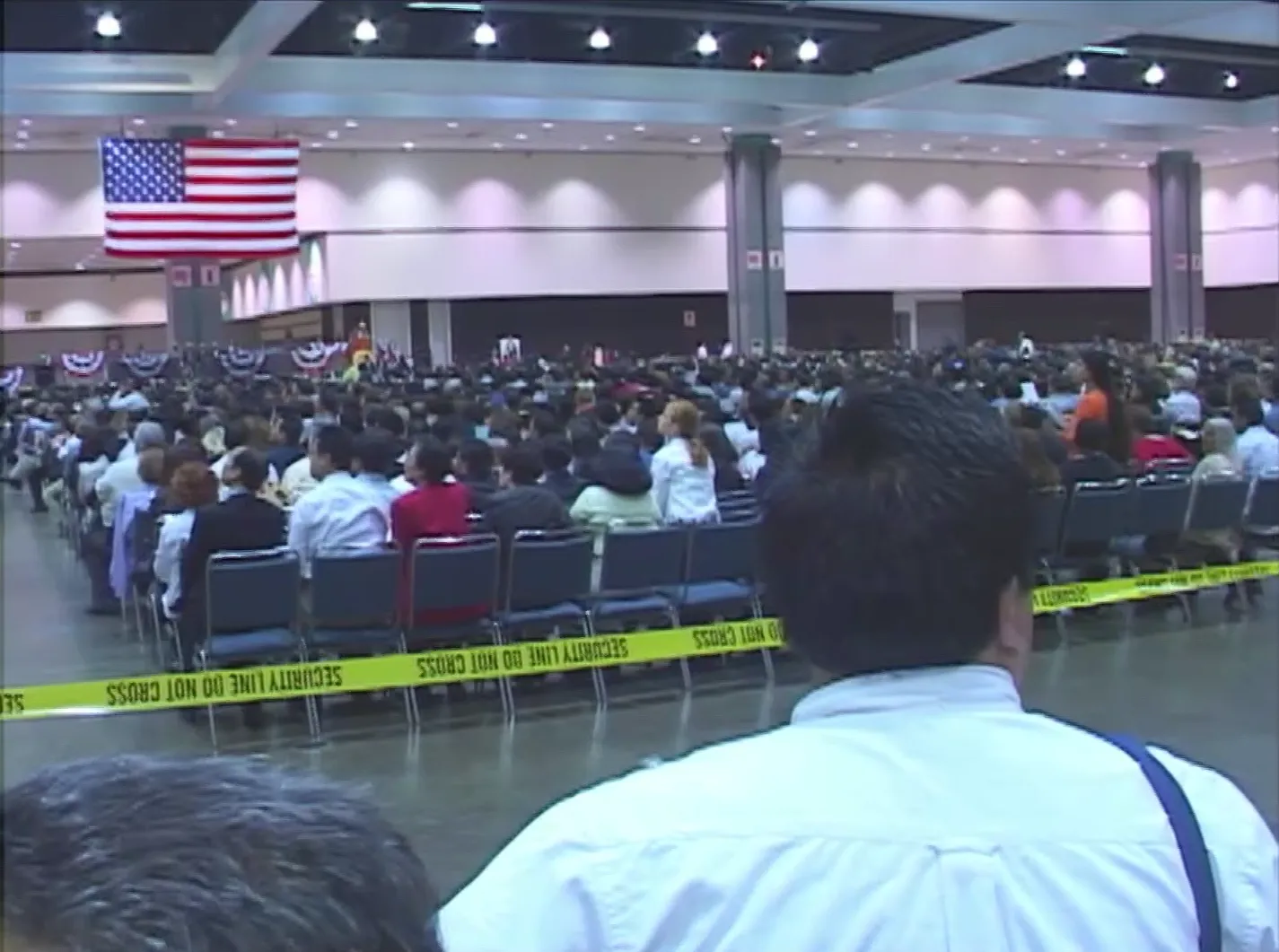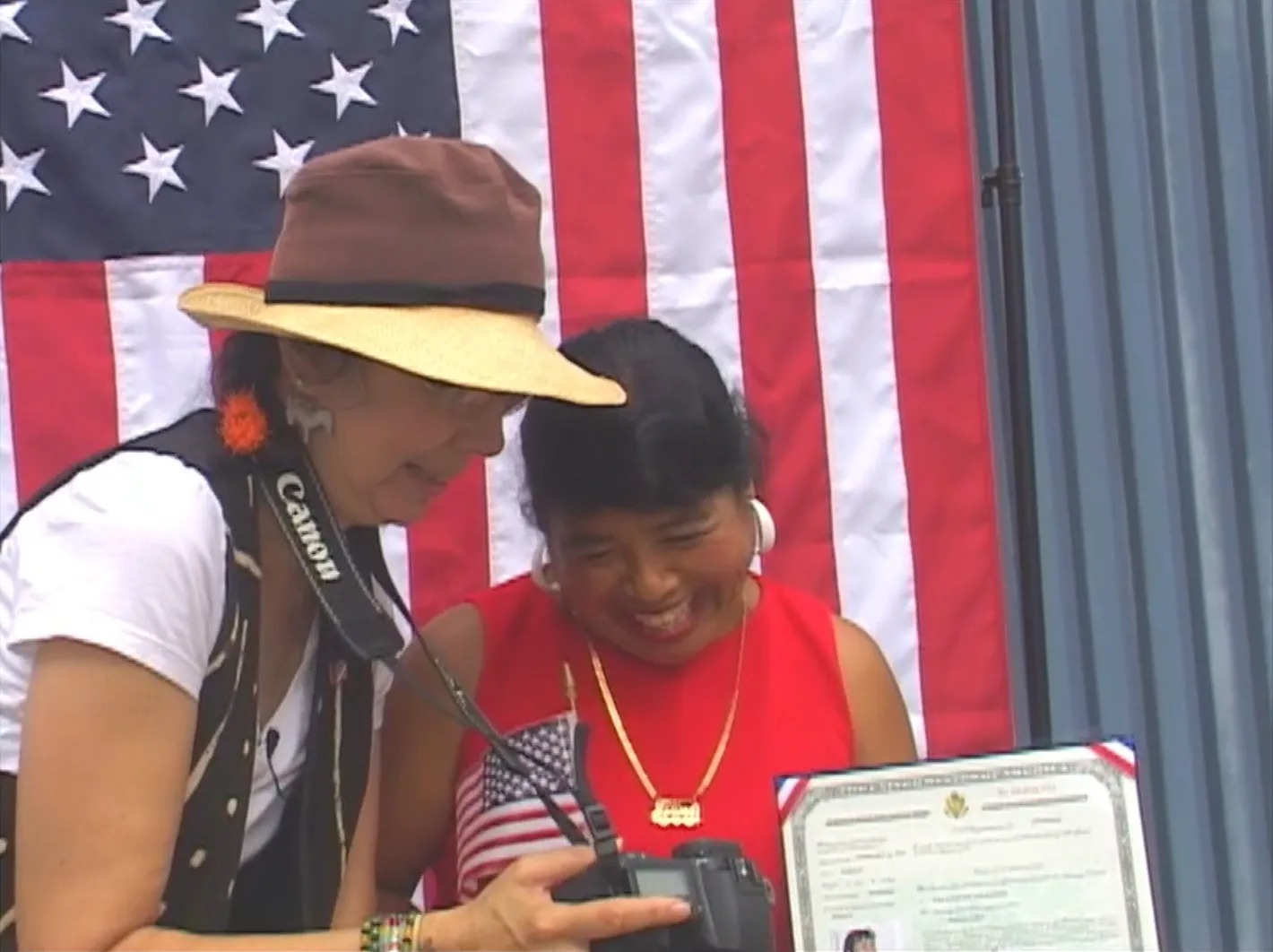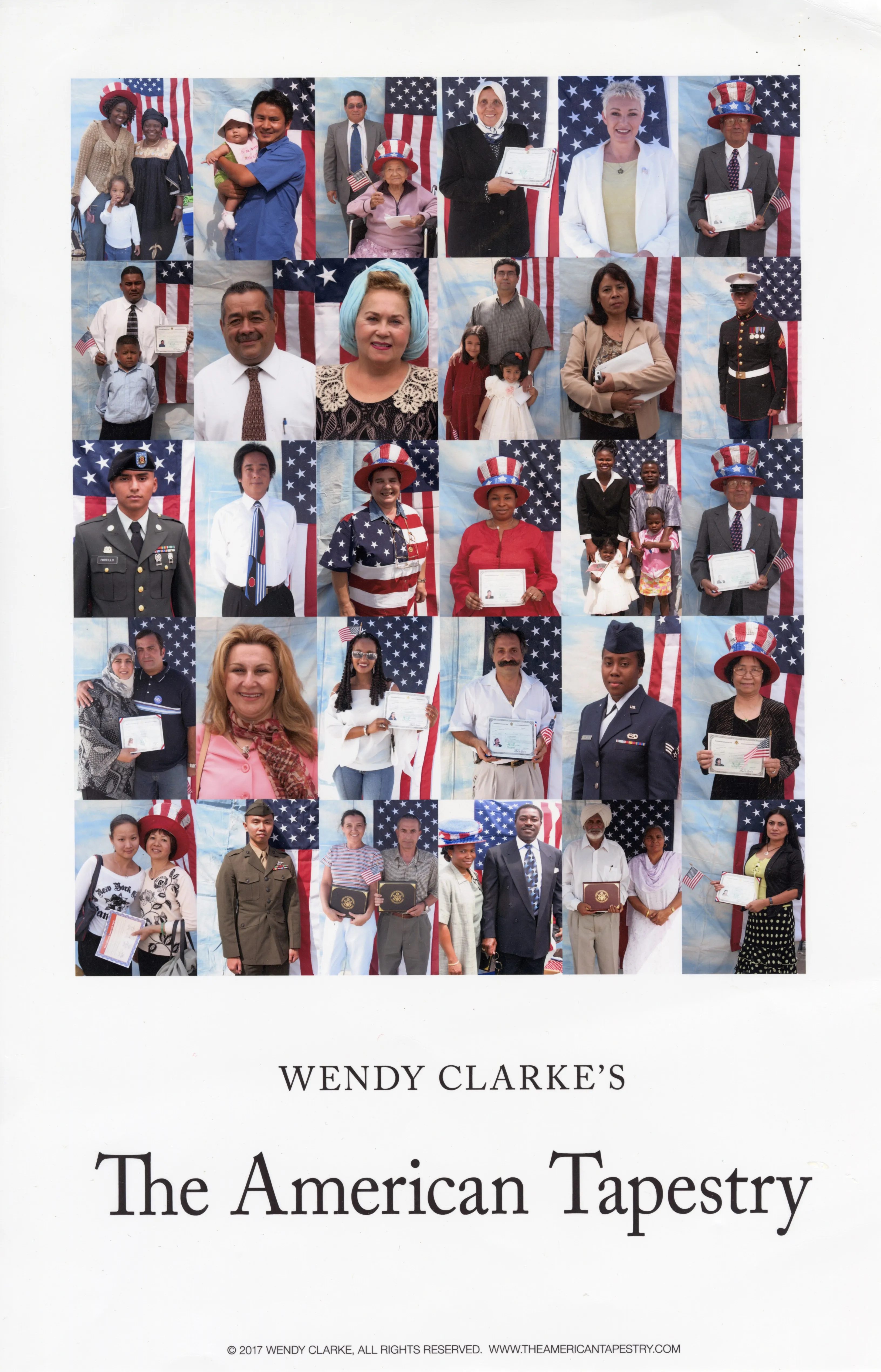The American Tapestry

Matt St. John
While this website focuses on Wendy Clarke’s video art, the most widely recognized aspect of her career, she has also created extensive work in other media and contexts. If you’re only familiar with Clarke’s videos, some of the more surprising projects might include her Dancing Donkey drawings and her wearable fleece art. Even within the broad category of media work, Clarke often incorporates multiple formats, like the art therapy projects she facilitated with incarcerated people, which include a mix of video and visual art. The American Tapestry is one project that demonstrates her flexible creative approach. After evolving plans that at times involved photo, text, video, and a book, The American Tapestry ultimately launched as an online exhibition highlighting portraits and stories from newly naturalized American citizens.
Under the working title New Face of America, The American Tapestry started at massive citizenship ceremonies at the Los Angeles Convention Center and Pomona Fairplex in California in 2004. In an oral history about her career, Wendy Clarke described the feeling of this event: “I’ve never been in such an uplifting, happy time with thousands of people. It was incredible.” Clarke set up a booth with an American flag outside of each location, inviting people to take a photo to mark the occasion. She captured one photo of each person and recorded their name, address, and email. She then sent each participant the photo and asked if they would like to share their immigration story. A few hundred people participated at both locations. Clarke’s initial plan was to receive stories and release forms in the mail, but she later sent a letter outlining a revised plan: “I am now visualizing a fuller project, which would include your photo, written story and video oral history.” In her own oral history, Clarke noted that she didn’t hear from many people who wanted to share stories, but they did receive some written responses and recorded a few videos.

One section of the citizenship ceremony. A still from VMA 131 in Wendy Clark’s collection.
In 2017, The American Tapestry was ultimately launched as an online exhibition featuring portraits and stories, primarily from individuals photographed at the citizenship ceremonies in Los Angeles. On the About page, Clarke notes, “I collected photos and stories from Mexico, El Salvador, Nicaragua, Argentina, Spain, France, England, Yugoslavia, Malta, Italy, Israel, Lebanon, Syria, Togo, Nigeria, Ethiopia, India, Romania, Ghana, Jamaica, Germany, Jordan, Philippines, Guatemala, Peru, Canada, Egypt, Eritrea and many other countries.” Arranged by name and by country of origin, the website galleries include hundreds of photos of people posing with their certificates of naturalization or holding small American flags. The website also features a guestbook where users can react to the project and Clarke’s contact information if people want to add their stories. Videos are not featured in the online exhibition, but a few tapes from this project, including footage of the ceremonies and the photo booth, are part of Clarke’s collection at the WCFTR. They are available to view on request.

Wendy Clarke showing one of the participants, Jovita Lara, her photo. A still from VMA 139 in Wendy Clarke’s collection.

A 2017 poster promoting Wendy Clarke’s The American Tapestry
The stories featured on the website reflect a vast range of experiences, with participants from numerous countries and economic backgrounds. Like much of Clarke’s work, the contributions from participants touch on major social and political issues, showing how they intersect with the problems of everyday people. Topics include goals in moving to the United States, experiences with complicated immigration processes, the personal impacts of changes in immigration policy, and stories of employers and family members taking advantage of a person’s undocumented status. Much like the Love Tapes, The American Tapestry opens a space for participants to share universal feelings and experiences, like Doris Bianco’s description of grief after losing her husband just one year after they moved to the United States together. But this project stands apart in Clarke’s career for rooting these emotions in the stories of new citizens, often revealing the political and social conditions that shape immigration in the United States.
The text on The American Tapestry website repeatedly affirms Clarke’s goal of welcoming all people to participate, like this message on the About page: “There are no exclusions: we hope to hear from everybody. Were your ancestors American Indian? Enslaved Africans? Voluntary immigrants? Are you yourself a naturalized citizen? Undocumented person? Please share your story. Every experience and perspective, painful and glorious, is part of our national tapestry.” Clarke’s commitment to openness and inclusivity, so characteristic of her video art, is also apparent in The American Tapestry, not only in the invitations to participate but in the language that frames the project. In a 2017 Kickstarter campaign that helped complete the website, Clarke notes that “the current political environment is what makes this project timely.” Eight years later, as the second Trump administration once again deploys an extreme immigration crackdown, The American Tapestry offers a reminder of the hopes and goals that have led people to pursue life in this country, in the past and present.
Matt St. John is a Manuscript Specialist at the Wisconsin Center for Film and Theater Research. His doctoral dissertation, “United Slates: The Evolution of the American Film Festival System”, traces the evolution of the American film festival system, revealing the emergence of globally-recognized, regional, and identity-based festivals from the 1960s to the present.